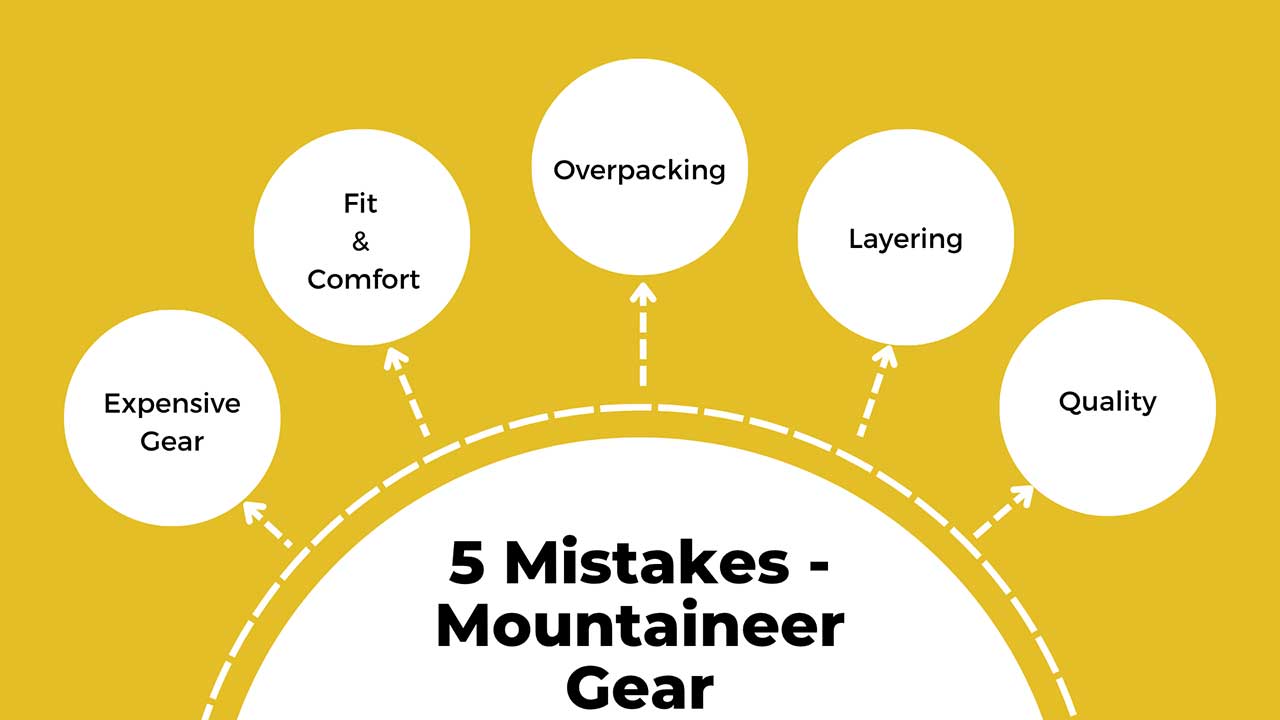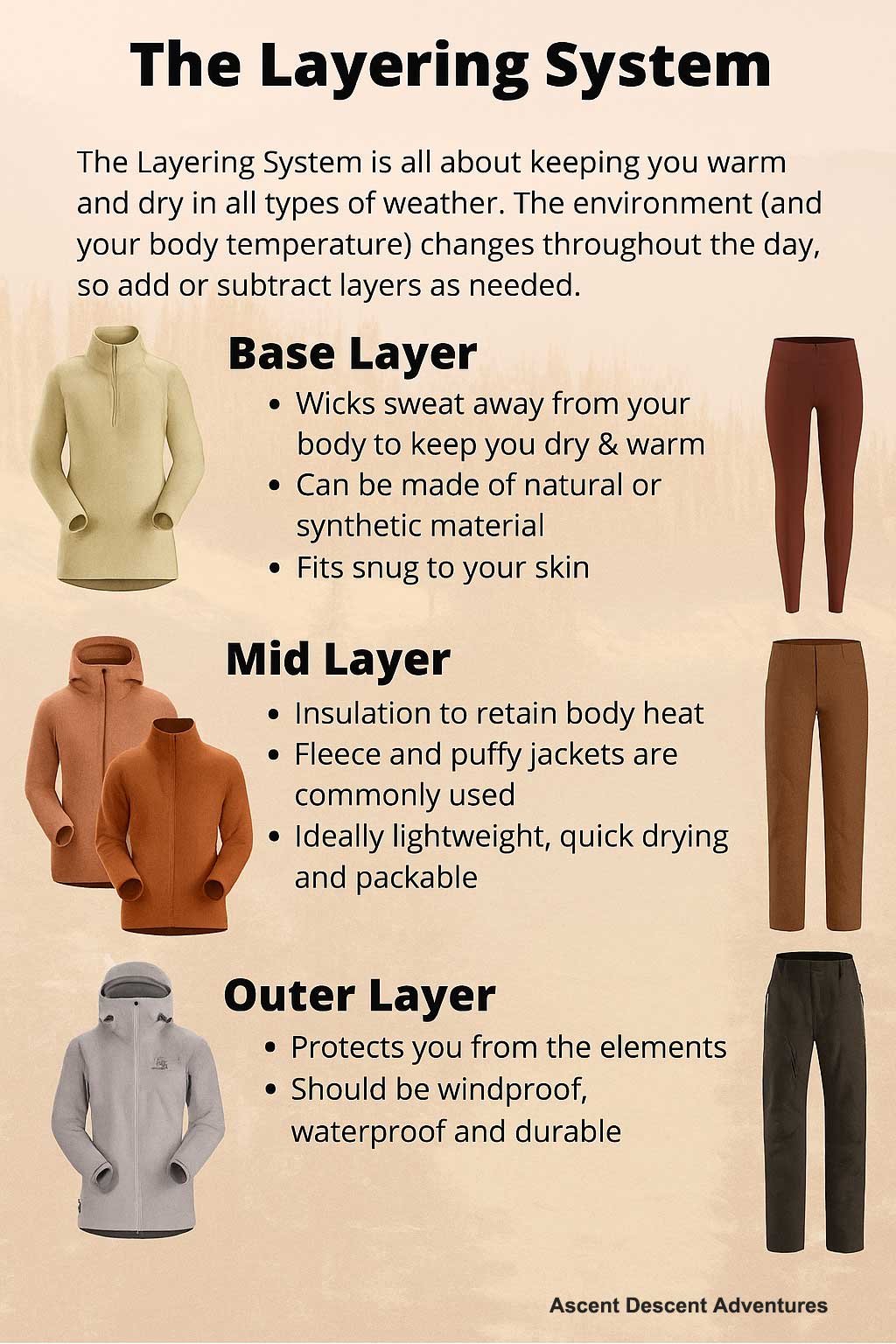5 Mistakes to Avoid When Buying Mountaineering Gear (Especially as a Beginner)
Blogs
Introduction
Buying your first set of mountaineering gear is both exciting and overwhelming. Whether you’re enrolling in a Basic Mountaineering Course or prepping for a high-altitude climb/trek like the Yunam Peak or Pin Parvati Pass, choosing the right gear is crucial for your safety and success.
Unfortunately, many beginners waste money or put themselves at risk by making simple but costly mistakes. This blog will walk you through the 5 most common mountaineering gear-buying mistakes and how to avoid them.
1. Buying Expensive Gear Without Understanding Your Needs
The Mistake:
Many first-timers believe they need to buy top-of-the-line equipment right away—think Gore-Tex shells, alpine boots, or high-end crampons. This often leads to unnecessary expenses.
The Fix:
Start with rentals or entry-level gear. If you’re joining a certified training or trekking program like those offered by Ascent Descent Adventures, most technical gear (ropes, carabiners, ice axes) is provided.
Invest slowly. First, buy personal items like:
- Base layers
- Trekking boots
- Gloves
- Sunglasses
ADA Tip: Wait until after your first trek or course before investing in technical gear. You’ll know exactly what you need by then.
2. Ignoring Fit and Comfort
The Mistake:
Buying a backpack, boot, or harness online without trying it on can lead to blisters, back pain, or even injury.
The Fix:
Try before you buy. Visit local stores like Decathlon or gear-specific shops to physically test:
- How the backpack sits on your hips and shoulders
- Whether your boots allow toe wiggle room
- If gloves fit well and allow finger dexterity
Also, pay attention to sizing charts and customer reviews if you must shop online.
ADA Tip: Use your trekking socks when trying on boots. A small difference in thickness changes the fit significantly.
3. Overpacking or Buying Too Much
The Mistake:
Many beginners assume more gear means more preparedness. This leads to unnecessarily heavy backpacks.
The Fix:
Stick to essentials. You need a layering system, not a wardrobe. Your checklist should include:
- Base layer (thermal)
- Mid layer (fleece or down)
- Outer shell (windproof/waterproof)
- 1-2 quick-dry T-shirts
- Lightweight track pants or trek trousers
Avoid bulky cottons and “just in case” items. Every extra gram matters at 4,000+ meters altitude.
ADA Tip: Ask your guide for a gear checklist suited to your trek. Check out our detailed packing list for Himalayan treks here.

4. Overlooking the Importance of Layering
The Mistake:
Beginners often invest in a bulky down jacket thinking it’s enough. But mountains require dynamic layering due to rapid weather changes.
The Fix:
Use the 3-layer system:
- Base layer: Moisture-wicking (polyester or merino wool)
- Insulating layer: Fleece or down
- Shell layer: Wind and waterproof (with ventilation zips)
This approach lets you regulate body temperature and stay dry regardless of conditions.
ADA Tip: Even in summer, Himalayan temperatures can drop below freezing at night. Always pack layers—even for treks like Beas Kund.
5. Skipping Quality on Critical Items
The Mistake:
To save money, beginners may opt for cheap knockoffs of critical gear—headlamps, carabiners, gloves, or boots.
The Fix:
Never compromise on quality for safety items. Invest in:
- Headlamps with at least 100 lumens and long battery life
- Certified carabiners if you plan on learning ropework
- Proper snow gloves with insulation and water resistance
- Trekking poles with adjustable lengths and strong locking mechanisms
Choose brands with proven Himalayan performance: Petzl, Black Diamond, Quechua (for beginners), Forclaz, Wildcraft (for Indian terrain).
ADA Tip: A reliable headlamp is more important than you think—especially for summit pushes or alpine starts.
Final Thoughts
Buying mountaineering gear as a beginner is a learning curve—but a manageable one when guided by experienced climbers and outfitters.
At Ascent Descent Adventures, we help beginners make the right choices by:
- Offering rental options during training
- Providing checklists before every trek
- Recommending tested brands suited for Indian Himalayan terrain
Before your next adventure, avoid these 5 mistakes and climb smarter, safer, and more confidently.
Ready to Begin Your Mountaineering Journey?
Check out these beginner-friendly treks and programs:
Glacier Training Courses
Rock Climbing Training Courses
Lamadough Trek
Want help choosing your first set of gear? Contact our gear experts or join our next course.
Recommended Read for Gear & Equipment:
- 5 Essential Gear Items Every Beginner Mountaineer Needs
- 5 Budget Gear Recommendations for First-Time Climbers
- 5 Must-Have Layers for Staying Warm Above 4,000 Meters
- 5 Basic Tools You Should Know How to Use in the Mountains